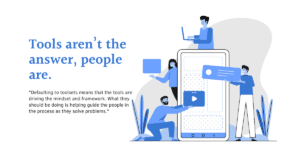The Rise of Ransomware Attacks During Covid
When the world had to halt all operations and immediately adjust to a new work dynamic back in March of 2020, it’s safe to say that we were not entirely prepared for the new landscape. While 2/3’s of all employees reported to be more productive in a remote environment, ransomware attacks increased to 62% worldwide since 2019. Whether this is due to lack of training, increased desperation of cyber criminals, or a multitude of factors, one thing is certain. Ransomware attacks aren’t leaving any time soon, and cybercriminals can adjust their strategy to meet any digital landscape.
- What is Ransomware?
- Ransomware is a software that holds your files or information for a “Ransome” payment. It can be spread either by phishing emails or drive-by downloads.
- According to Justice.gov, roughly 4,000 ransomware attacks have happened daily since 2016. Over half of all ransomware victims pay the ransome, but roughly a quarter receive their full data back.
- Ransomware payments average 170k, while the average ransome payment request is 10,000.
- Ransomware Tactics and Costs During Covid
- According to KMPG, phishing emails carrying ransomware in the past two years have used these themes to trick victims into downloading malicious software:
- Information on vaccines, medical masks, or in-demand supplies like hand sanitizers.
- Scams that offer financial assistance for people or businesses during economic shutdowns.
- Deals on popular technologies like video conferencing solutions.
- Technical updates for collaboration and social media solutions.
- Ransomware recover on average in 2019 costed roughly 761k. In 2020, that number increased to 1.85 million. It is estimated that in 2021, global ransomware damages are predicted to hit 20 billion dollars.
- The most popular targets of ransomware in 2021 were healthcare, education, and manufacturing/industry.
- According to KMPG, phishing emails carrying ransomware in the past two years have used these themes to trick victims into downloading malicious software:
- What is the foreseeable future of ransomware and how to we protect ourselves?
- Ransomware is projected to cause 265 billion dollars in losses in 2031.
- Training employees is one of the most important weapons we have against ransomware attacks.
- Update your systems consistently so that you are less likely to have vulnerabilities.
When the world had to halt all operations and immediately adjust to a new work dynamic back in March of 2020, it’s safe to say that we were not entirely prepared for the new landscape. While 2/3’s of all employees reported to be more productive in a remote environment, ransomware attacks increased to 62% worldwide since 2019. Whether this is due to lack of training, increased desperation of cyber criminals, or a multitude of factors, one thing is certain. Ransomware attacks aren’t leaving any time soon, and cybercriminals can adjust their strategy to meet any digital landscape.
What is Ransomware?
Ransomware is a malicious software program that holds your files or information for ransom. It can be spread by sending phishing emails, downloading via malware-infected websites and file sharing networks like torrents where users are tricked into believing they’re downloading something else. The number of ransomware attacks is increasing daily, with roughly 4,000 in 2016 and 7500 so far this year. In a recent study by Kaspersky Lab over half the victims paid up but only one-quarter received their entire data back as promised. Ransomware’s average payment request is about 10,000 dollars while the median ransom paid out so far this year has been around 170k – that’s way higher than what most people would expect!
Ransomware Tactics During Covid-19
According to KMPG, phishing emails carrying ransomware in the past two years have used these themes to trick victims into downloading malicious software:
- Information on vaccines, medical masks, or in-demand supplies like hand sanitizers.
- Scams that offer financial assistance for people or businesses during economic shutdowns.
- Deals on popular technologies like video conferencing solutions.
- Technical updates for collaboration and social media solutions.
The cost of ransomware in 2019 is estimated at 761k, whereas by 2020 it has increased to 1.85 million and forecasted that global damages will have reached 20 billion dollars by the end of 2021. In 2021, the three most popular targets for ransomware were healthcare, education and manufacturing/industry. The demand for these industries during the Covid-19 crisis is likely why they are so susceptible to cyberattacks. While it may be unfortunate that hackers can take advantage of this neediness by targeting those systems with weak security measures or outdated toolsets, it is a stark reminder of how susceptible any organization without preparation is to attack.
What Is the Foreseeable Future of Ransomware? How Do We Prepare?
Ransomware is projected to cause an estimated 265 billion dollars in losses by 2031. One of the most important weapons we have against this threat are trained employees who know how to patch their systems and update them consistently, but that’s not all – if you want even greater protection for yourself, your company, and your customers from ransomware attacks then make sure to keep your employees up to date on vulnerabilities and how to avoid becoming a victim. If possible, keeping your data on a backup drive will also save you a giant headache when your data becomes compromised.
The unfortunate truth is this: as a society, we know frighteningly little about how to combat a ransomware attack. Many of us affected will feel that our hand is forced and that we must pay a Ransome to save our company. This could not be further from the truth, as paying a Ransome will not only encourage these tactics in the future, but they also aren’t likely to guarantee your returned data. If you or your company fall victim to a ransomware attack, contact your local authorities first.
For more tips on how to protect yourself against cyber threats, sign up for the PSG newsletter! We offer insider information about the cyber world from a collective decades of experience that covers everything from how to react to a cyber threat to how to design an intuitive user interface for your companies webpage.



